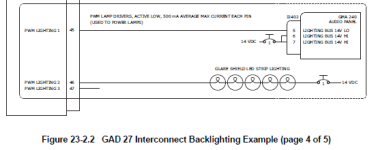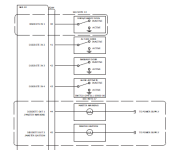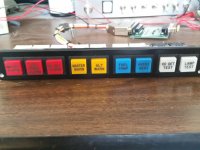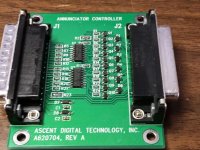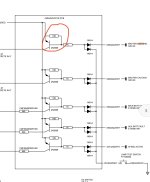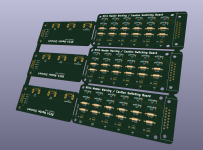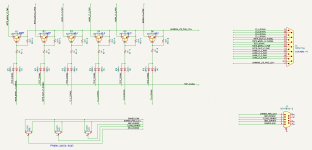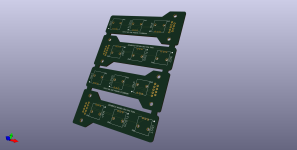I am hoping someone else has come across this.
I was planning to use the functionality of the GEA24 to ground 2 lights for master warning / caution. This works by going low on pin 44 or 45 to give a ground to turn the lights on.
I wanted to send these through the GAD27 PWM dimming circuit to make the lights dimmable at night - however, i find that the GAD27 circuit dims by pulsing (PWM) the GND side of the circuit - i need to send power to the lights, then connect the ground to the GAD27 to dim.
These 2 devices obviously won’t work together! Has anyone else come up with a solution for this?
I could have a dedicated dimmer pot which adds resistance on the positive side of the master warning / caution lights but this seems silly. I was hoping to have it go through my "instrument lights" pot, which would dim all the cockpit indicators (as well as control the DC circuits to dim the screen bezels etc).
Otherwise, maybe i can use a "BRIGHT/DIM" switch which adds a resistor of a fixed value onto the power supply side of master warning / caution lights. Could add a “test” momentary as well. Or just live with them being bright?
I was planning to use the functionality of the GEA24 to ground 2 lights for master warning / caution. This works by going low on pin 44 or 45 to give a ground to turn the lights on.
I wanted to send these through the GAD27 PWM dimming circuit to make the lights dimmable at night - however, i find that the GAD27 circuit dims by pulsing (PWM) the GND side of the circuit - i need to send power to the lights, then connect the ground to the GAD27 to dim.
These 2 devices obviously won’t work together! Has anyone else come up with a solution for this?
I could have a dedicated dimmer pot which adds resistance on the positive side of the master warning / caution lights but this seems silly. I was hoping to have it go through my "instrument lights" pot, which would dim all the cockpit indicators (as well as control the DC circuits to dim the screen bezels etc).
Otherwise, maybe i can use a "BRIGHT/DIM" switch which adds a resistor of a fixed value onto the power supply side of master warning / caution lights. Could add a “test” momentary as well. Or just live with them being bright?
Attachments
Last edited:

